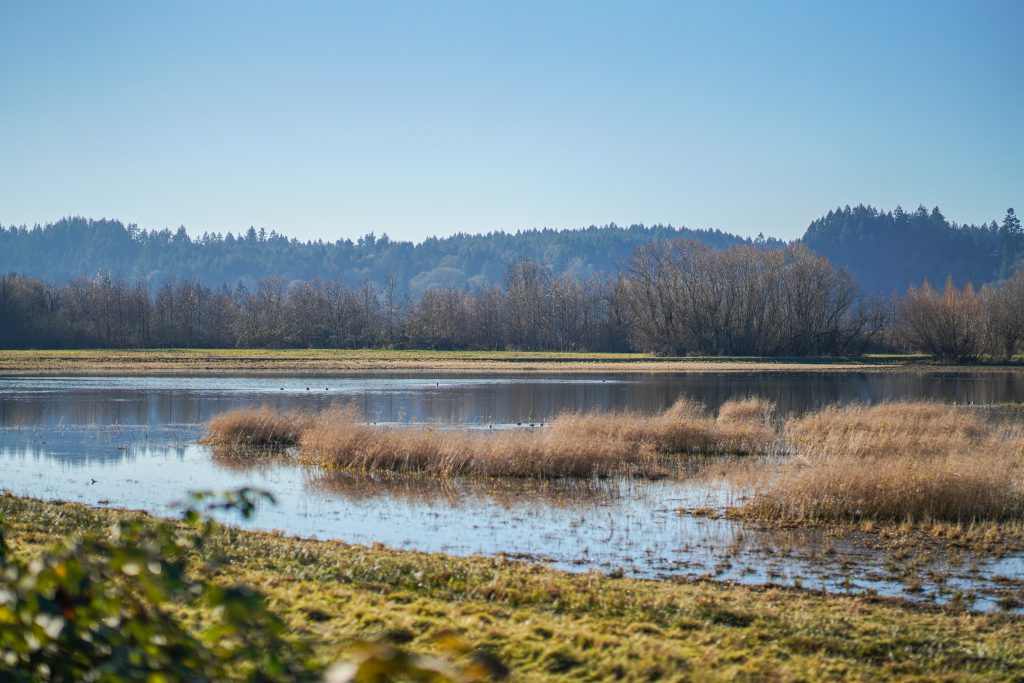
In 2012, the Puget Sound Partnership’s Leadership Council established three initiatives to tackle multiple issues critical to Puget Sound recovery: Stormwater, Habitat, and Shellfish. To manage this effort, agency and institutional partners assembled into three Strategic Initiative (SI) Lead teams, charged with bringing people and ideas together to improve the water, habitat, and communities. They are guided by the Puget Sound Partnership’s Action Agenda for Puget Sound.
Following the release of the 2022-2026 Action Agenda, the Habitat, Shellfish, and Stormwater Strategic Initiative Leads (SILs) have released requests for proposals to solicit programs, activities, and lines of work that protect and restore habitat, water quality, and harvestable shellfish beds.
Representatives from each SIL answered questions about their new requests for proposals (RFP) and what they hope to accomplish.
Habitat SIL
What most excites you about your RFP?
The Habitat SIL’s Investment Plan takes a “systems approach” to protecting and restoring habitat and focuses on work that is harder to fund with more traditional funding sources. This means we have the opportunity to support some really innovative approaches that will expand both capacity and impact within the Puget Sound recovery community and help get more restoration projects shovel-ready. We love working with partners across Puget Sound to advance their habitat restoration and protection goals and we are ready to continue to build on the accomplishments of our previous investments to truly make an impact on Puget Sound recovery. — Devan Rostorfer, Habitat SIL Policy Co-Lead
What do you hope we can accomplish?
Our goal is to make investments that will provide multiple benefits to both habitat and local communities. We are at a pivotal moment when everything we do needs to consider climate resilience and support for communities that have been disproportionately impacted by environmental degradation. Because these issues are so complex, they require a collaborative approach. We hope to use our funding to build a network of partners that together can have an even greater collective impact in advancing habitat protection and recovery. — Jennifer Griffiths, Habitat SIL Policy Co-Lead
Shellfish SIL
What most excites you about your RFP?
Entering a new funding cycle allows our program to adapt to addressing new needs and barriers, while also being able to reevaluate ongoing approaches in addressing fecal pollution impacting harvestable shellfish beds. With the unique opportunities of EPA’s Puget Sound Geographic Funds being able to support harder-to-fund work, I’m excited for our program to help fill gaps that are faced in carrying out essential work such as more community outreach and social marking for Pollution Identification and Correction programs, no-match grant programs to support low-income on-site sewage system (OSS) owners in OSS repair and maintenance, and technical and financial assistance to motivate agricultural land users to voluntarily reduce livestock manure runoff—to name a few.
This year the Shellfish SIL is also prioritizing efforts to address impacts from wastewater treatment plants on shellfish beds. This is exciting because historically we haven’t focused investments here due to challenges associated with infrastructure improvement costs, policy changes, and ability to implement necessary improvement—but there are acres to gain if we move forward strategically!
What do you hope we can accomplish?
This year you will see an emphasis to better integrate climate change adaptation and resilience, environmental justice, and diversity, equity, and inclusion principles and solutions into Shellfish SIL investments. Taking a more holistic approach to address needs and barriers to reduce fecal pollution impacts on harvestable shellfish beds. This work will be key in continuing to make progress towards our ultimate recovery goal to improve the health of Puget Sound by improving water quality and supporting healthy human populations.
— Audrey Coyne, Shellfish Strategic Initiative Lead
Stormwater SIL
What most excites you about your RFP?
What excites me the most about the RFP is that we know we will get strong transdisciplinary approaches to the problems we are facing—approaches that knit together social, economic, and physical sciences and address climate change, diversity/equity/inclusion and behavior change. It’s like a “community MRI” of sorts.
What do you hope we can accomplish?
We hope we can accomplish some pivotal, large-scale change by focusing on the 800 lb. gorillas like transportation, toxic chemicals, and land use which really drive a lot of the adverse on-the-ground water quality issues we see. By addressing these issues head-on with a solutions-oriented focus, I hope we can start to formulate a strategic path forward for ACTION. That’s the rub.
— Heidi Siegelbaum, for the Stormwater Strategic Initiative Lead

